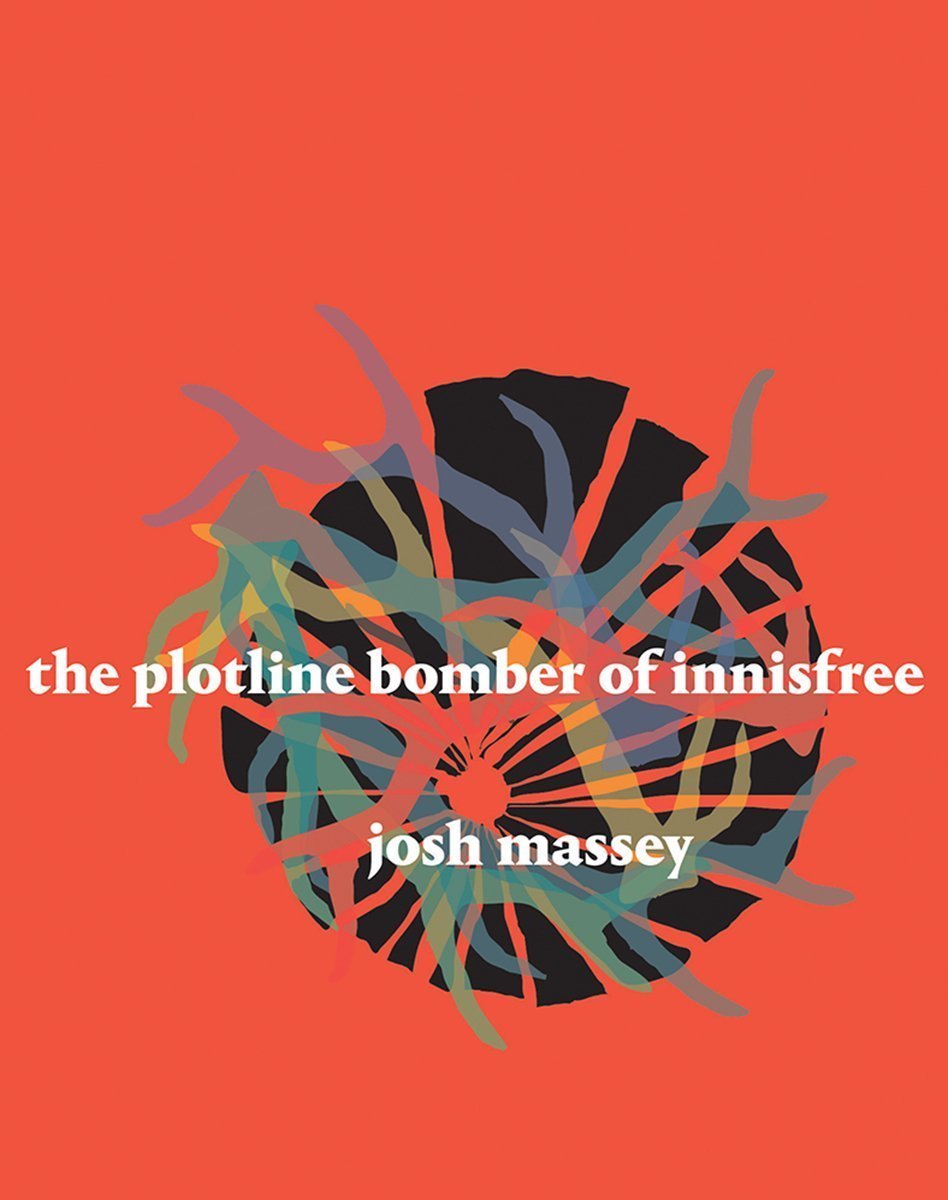
Plotline Bomber of Innisfree
The Plotline Bomber of Innisfree, written by Josh Massey, a journalist from Terrace, BC was published by Book Thug of Toronto. His launch was held at Books and Co in Prince George and is available for $21.
He also spoke to CNC students in English 204 (Canadian Poetry) about his writing strategies and offered advice for prospective young writers.
“When you’re working on a major project, you have to write every day,” he told students.
“Anyone wanting to write for publication has to be aware of the influence of great writers. My dad would read Jack London out loud when I was growing up.”
“Also a new writer must expect criticism and be able to deal with it. A developing writer has to have a thick skin,” said Massey, a holder of a Master of Arts degree from UNBC. “Ultimately people admire you for it.”
Massey was introduced to the class by Graham Pearce, CNC creative writing instructor.
“Josh is a working writer,” Pearce said. “To be professionally identified as writer means something. As a reporter for The Terrace Standard, he has won journalistic prizes.”
‘The Plotline Bomber of Innisfree’ is set, with some science-fiction elements, in the future (the late 2030s) and centres on Jeffrey Inkster, a former hipster who has become an elk rancher in what is recognizably the Peace Country of British Columbia. The plot builds on rumours of eco-terrorism and the excessive response of governments and the petroleum and pipeline industries, and a sense of foreboding grows.
Petroleum and pipeline companies’ monitoring efforts include the use of a satellite scan called Pipewatch. But pipeline scanning isn’t enough security so the petroleum industry and allied governments hire 10,000 pipeline observers to help with the job. For the affected local population, “there are no paths, no future” and the tensions build in the novel.
“The germ of the novel came out of my forestry work experiences, but I use imagination as much as possible,” Massey explained. The idea for his book first formulated in his mind in 2010 or 2011 while he was still living in Prince George and involved with research for a thesis project. At first he thought the book “should be a super-long prose poem.”
“Although I wanted to tell about my experiences, I set it in the future….I created a fictional future.”
Massey said that, in the book, provinces’ and cities’ names were changed. B.C. became PC Columbia, Alberta became Cowberta and Vancouver, Cancougar, where everything, including wildlife, is overly processed.
“It is an idea-driven book,” he said.
A dissident young man anonymously posts leaflets that warn that even national park boundaries are not enough to stop a proposed pipeline is central to the plot, and these leaflets draw the attention of the authorities. “Elk die of poison gas, or so it seems.”
The novel has three main strands: a traditional story in the first person, blog posts and news articles in a journalistic style, and prose poetry. “I’m a poet, too, and I wanted to use some of that.”
Massey spoke for about 25 minutes. During a question-and-answer session, CNC instructor Dennis Schreiner said the novel, at some points seemed disconnected. Massey answered that the prose-poem segments are from the point of view of the pipeline bomber, who is an anti-hero.
“Eco-terrorism in this context is psychotic.”
Schreiner asked whether Massey had been influenced by Edward Abbey’s environmental protest novel, The Monkey Wrench Gang.
“I read some of that,” he replied. “And ‘The Dukes of Hazzard’ also influenced me.”
When asked, Massey agreed that the late nineteenth- and early twentieth-century English novelist Joseph Conrad had also influenced him.
Pearce wanted to know if the novel was a warning that the seeds of destruction have been sown.
“It’s a primal scream of people in a world on the verge of environmental collapse,” Massey agreed.
“Was it cathartic to write?” Pearce asked.
“My dark vision is out there,” Massey said. “I no longer have control over it. People can respond to it however they want.”
Massey said the book had been reviewed six times in urban media.